Scenario S10 is the first scenario in the ASL Starter Kits to feature two “minor” nations of World War II fighting each other. In this case, it is the Greeks against the Italians in a chase across the board. Set in November 1940, Italy’s leader, Mussolini, had decided to impress his German allies with a “parallel war”, and so had sent his troops into Greece. Not surprisingly, the Greeks fought back, and the Italian army was soon in retreat, the Greeks chasing them out of the country. And so, in this scenario, the Italians are being pursued by the Greeks, needing to have 10 VPs worth of unit cross the length of the board. Unusually, no units start on the board!

In the picture, we’ll be crossing from right to left. The grain fields, normally bare in November, are present by a Scenario Special Rule (SSR). Mick chose to play the Greeks and I took the Italians. Statistics for this scenario suggest that the Greeks tend to win this with about a 70% success rate. I was not particularly sanguine about my chances. As far as I could see, my best chance of success would be to leave a few units behind to slow down Mick’s pursuit, and run a number of forces on either side of the fields towards the finish line. A flanking force of Greeks would be turning up between turns 2 and 4, depending on Mick’s rolling.
And so, leaving only a handful of squads behind, I double-timed my way away from the pursuing Greeks!
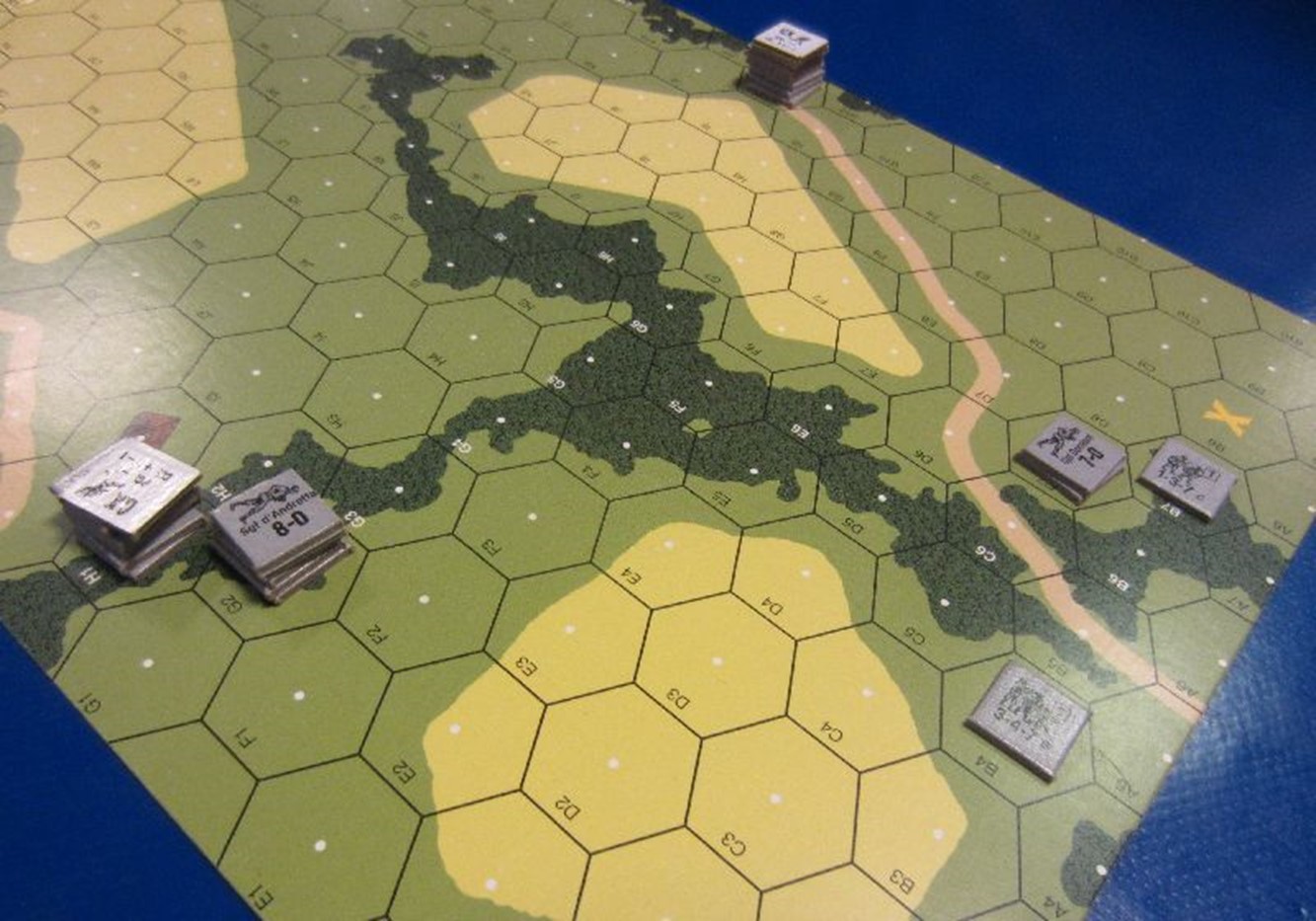
Unlike the last scenario, these elite Italians had a 7 morale, but their poor equipment still limited them to a 3 Firepower; not good for making sure the Italians kept their distance!
Mick moved his troops on, and I had some success in breaking the pursuing forces, but there were just too many forces to stop them all; just as well, or this would be a very dull scenario! Mick eliminated my squad in B4 in Close Combat after a successful Ambush, and moved into Close Combat in B7 – but was somehow unable to eliminate my half-squad there! The broken Greeks cowered in A3, not quite routing off the map and having no building or wood hex they could get to without getting closer to my men.

I wasn’t going to hang around: My troops ran through the remaining woods and, using the roads as much as they could, sped off away from Mick’s troops. I chose to advance my remaining rearguard into the melee, despite forfeiting the possibility of using defensive fire during the next turn, hoping Mick would send more troops into the melee.
Mick indeed did so, and thus I managed to tie up quite a number of units. Unfortunately for me, he also made the roll for his flanking force in the first available turn, and my lead units could see them up ahead, moving through the treeline.
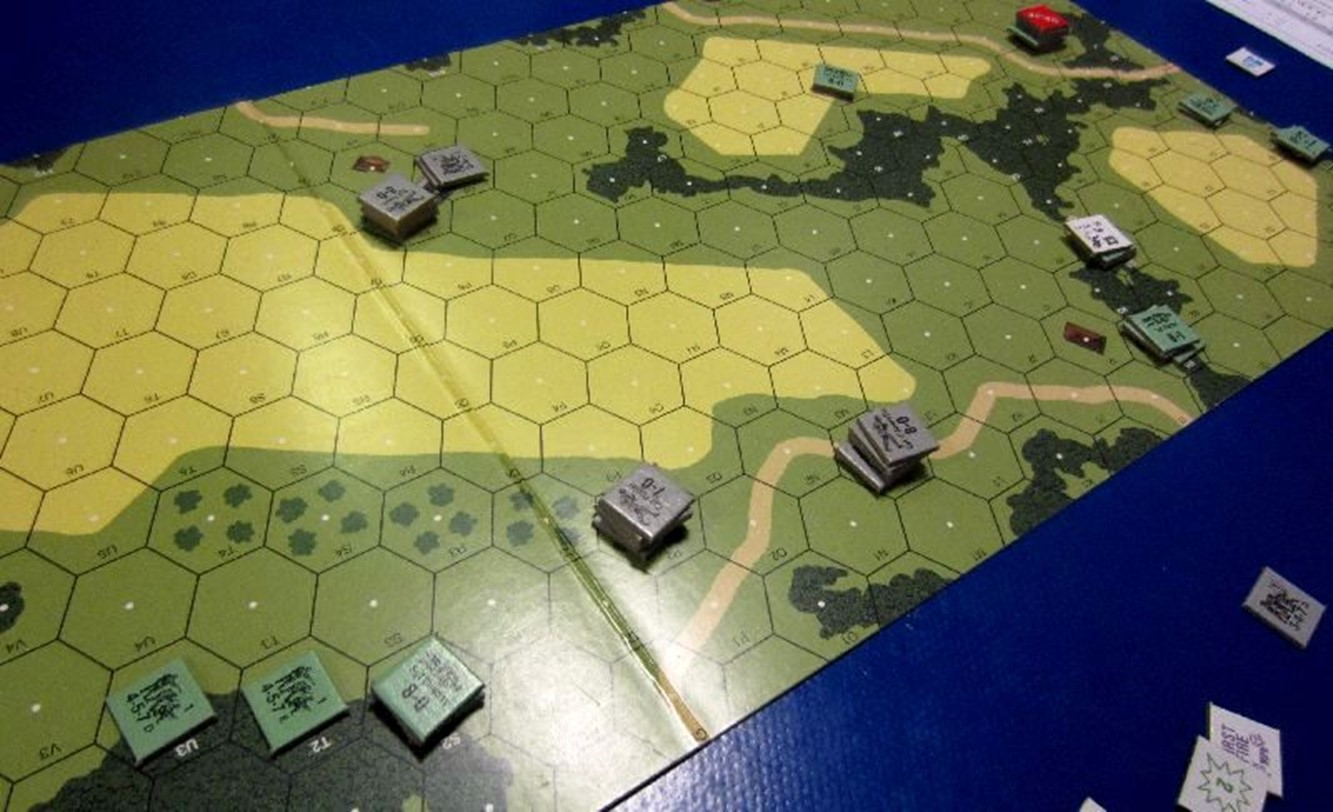
The Greek firepower was a lot more effective than mine; the difference of just one point from 3 to 4 is quite significant in ASL. It’s even better when you can Firegroup together the units. With Mick’s forces also well within sight of me from behind, I had some difficult decisions to make. It was obvious I couldn’t just stand and fight: there wasn’t enough time for a firefight. I needed to keep on the move. I chose to split my forces again, leaving some behind to slow down the pursuit, while moving forward as quickly as I could. The rear units would take cover in the trees at O1.
Unfortunately, a lot of them didn’t make it as fire from the pursuing units cut them down. My MMG, which began the game broken, was abandoned as its bearers broke. The others ran forward, breaking one of the Greek units in the woods, along with its leader, but the rest of my fire was ineffective as the Greeks gained on my positions. One of my broken units ran through the grainfield away from the pursuers and flanking Greeks, hoping to find some sort of cover. It seemed unlikely.
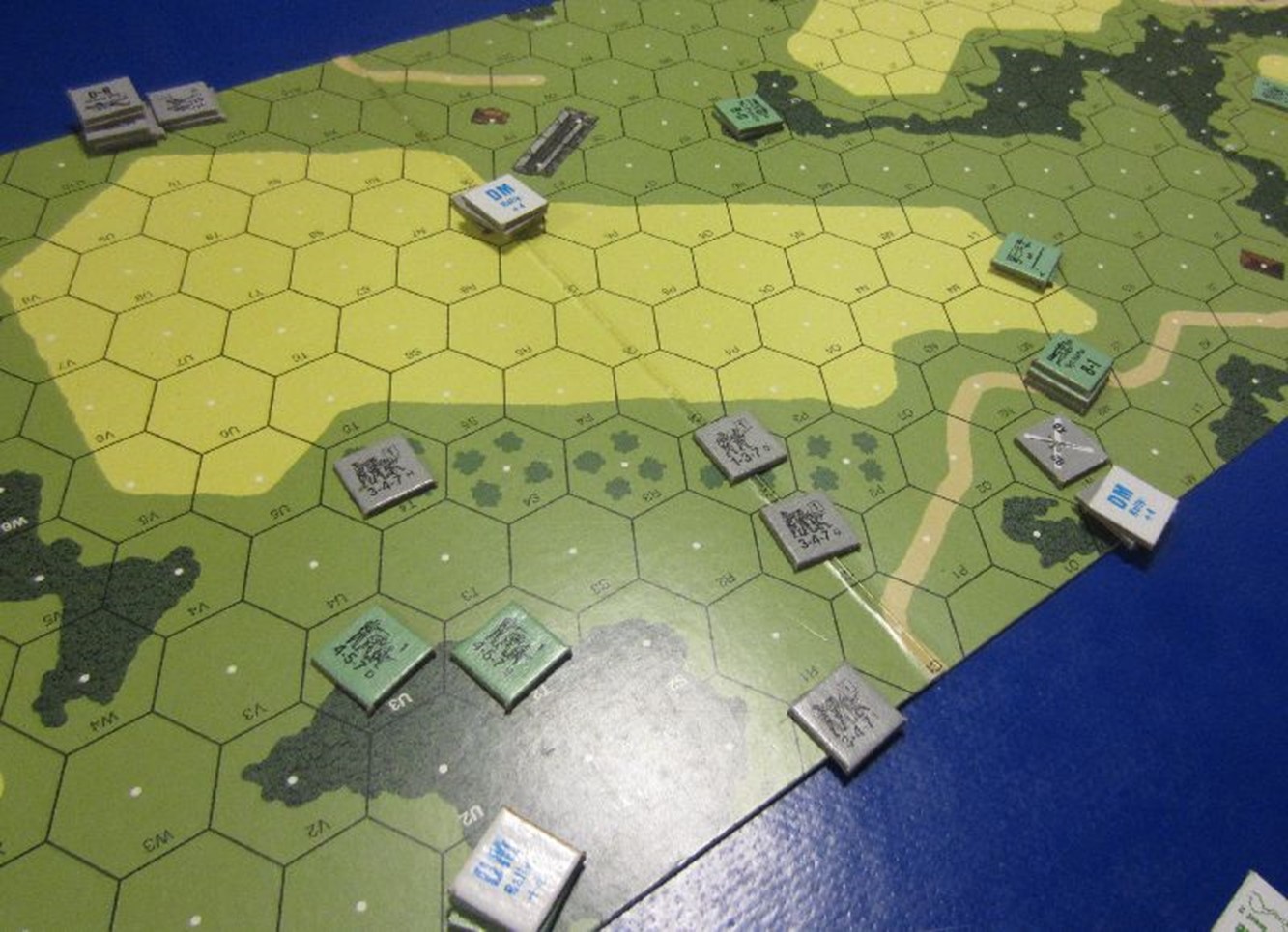
I had 9 VP worth of units crossing the far side of the fields, enough to almost take me to victory – and there was little Mick could do to slow them down. Instead, he needed to stop all of my remaining units from escaping. At this point, firing on broken units was not entirely in Mick’s best interest, as they would rout towards my escape line – instead, the pursuit was more important.
My squads in the orchards were now mostly distraction – all of them breaking during my movement phase, but I was able to use them to distract them from looking behind them where I had a squad double-timing it through the trees. A poor set of rolls on Mick’s part saw one of them get eliminated, and I was feeling pretty good about it all – a CX squad in V2 with no-one adjacent gave me a good chance of reaching the finish line.
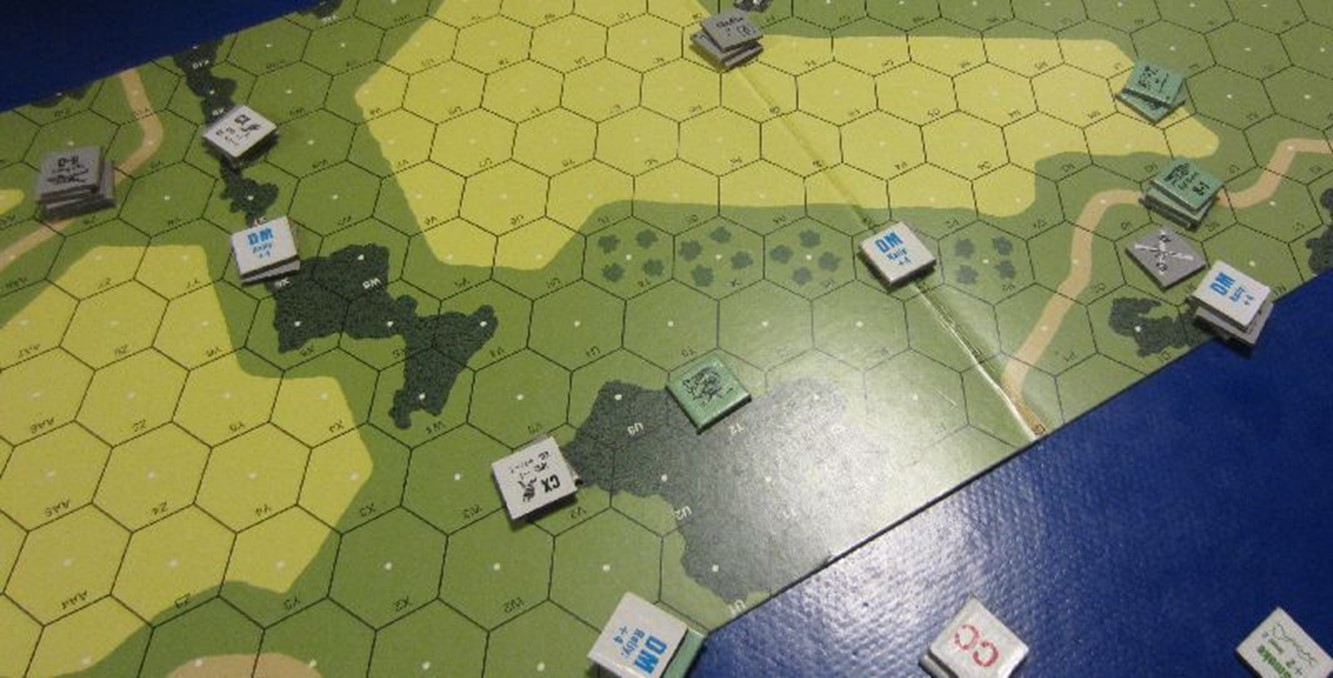
Unfortunately, it couldn’t protect itself from Mick’s last squad in those trees using Assault Movement to come adjacent to it, and then advancing into melee. Due to CX, I wasn’t in a good place to fight a close combat, and I was reduced to a half-squad as Mick’s other troops moved up.
My broken troops in the farmhouse in the middle of the group ran away from the approaching Greeks, but they’d never reach the end in time. I was down to two options: winning an unlikely melee, or rallying a broken unit in the trees.
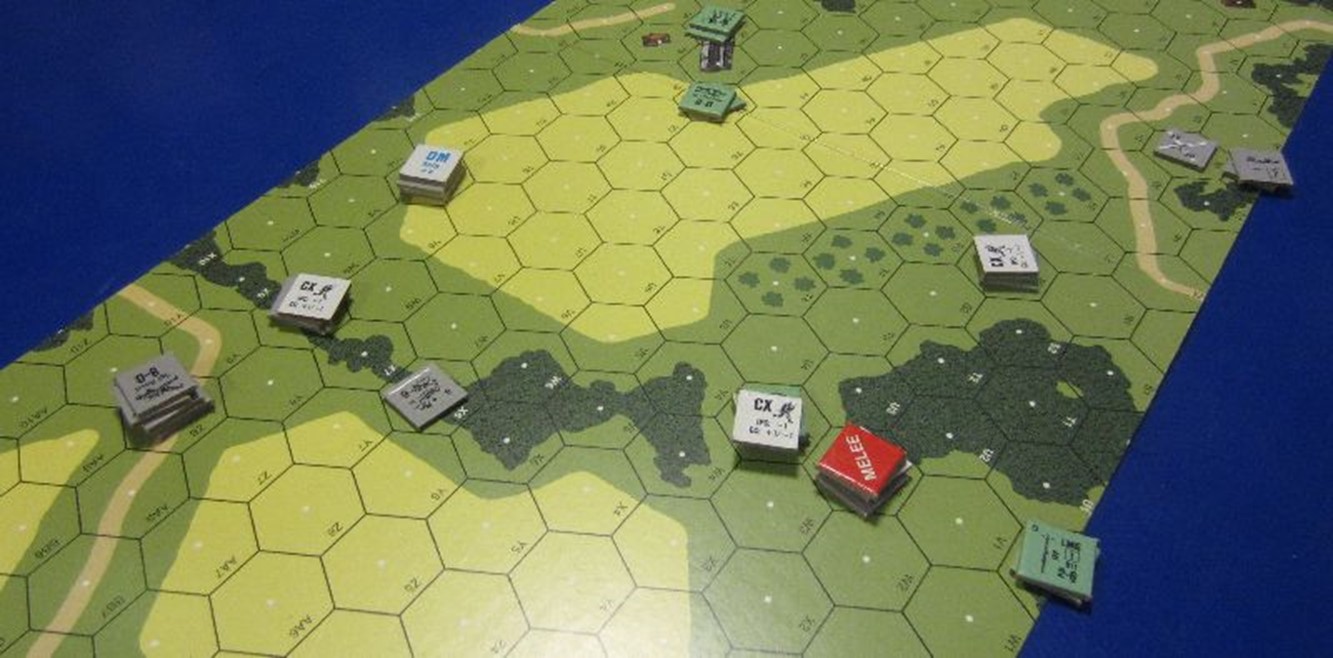
That didn’t happen. Instead, it routed along the tree line until it was eliminated in a burst of accurate from Mick’s troops. The melee ended with my half-squad completely eliminated, and I rushed my remaining troops off the board… one victory point short of the win.
Looking behind them, the demoralised Italians could see the battlefield: some of their comrades still alive, but broken and demoralised, and the Greeks scattered all over the battlefield as they mopped up the Italian aggressors.
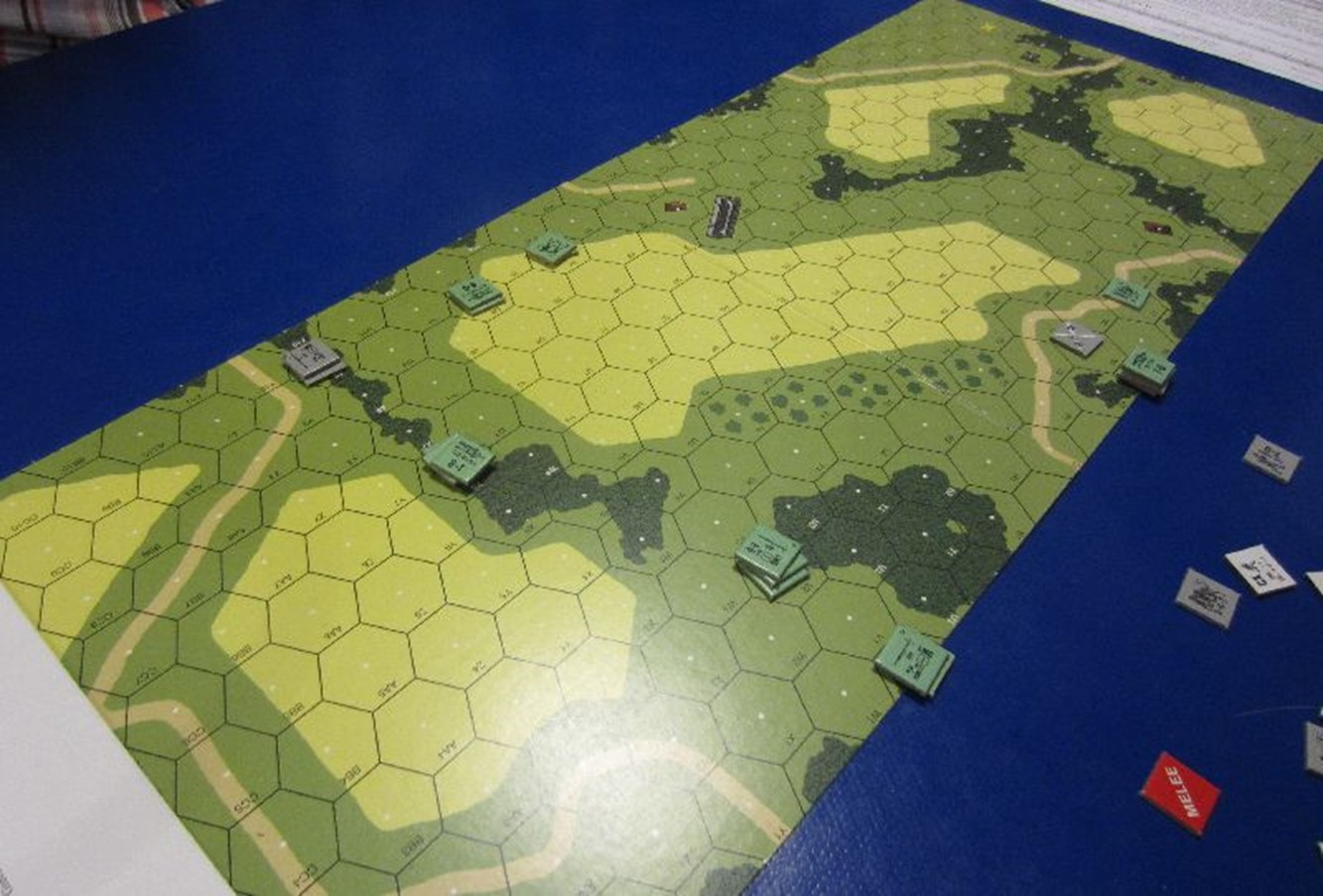
It had actually been a fairly close game; I was actually quite surprised when I was trapped in melee, but that was all Mick needed for the win. There’s no doubt it’s a very difficult scenario for the Italians. Mick had taken quite some time to move all his troops up, so I thought I was in a better position than I was, but his flanking force was extremely effective in slowing me down.
I’ve left Mick now perusing the rules for Guns, as the next scenario we’ll play together will see the introduction of light mortars and bazookas onto the battlefield.
